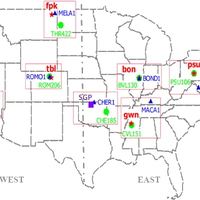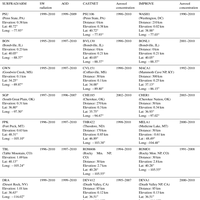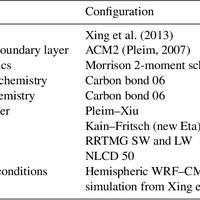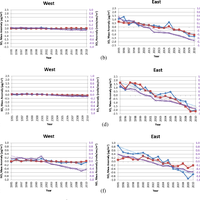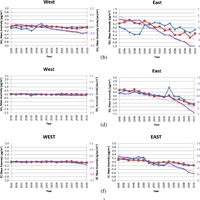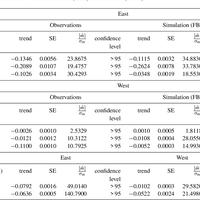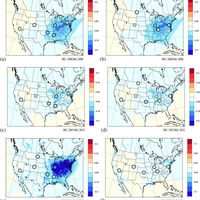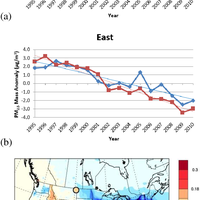Abstract
Long-term simulations with the coupled WRF-CMAQ (Weather Research and Forecasting-Community Multi-scale Air Quality) model have been conducted to systematically investigate the changes in anthropogenic emissions of SO2 and NOx over the past 16 years (1995-2010) across the United States (US), their impacts on anthropogenic aerosol loading over North America, and subsequent impacts on regional radiation budgets. In particular, this study attempts to determine the consequences of the changes in tropospheric aerosol burden arising from substantial reductions in emissions of SO2 and NOx associated with control measures under the Clean Air Act (CAA) especially on trends in solar radiation. Extensive analyses conducted by Gan et al. (2014a) utilizing observations (e.g., SURFRAD, CASTNET, IMPROVE, and ARM) over the past 16 years (1995-2010) indicate a shortwave (SW) radiation (both all-sky and clear-sky) "brightening" in the US. The relationship of the radiation brightening trend with decreases in the aerosol burden is less apparent in the western US. One of the main reasons for this is that the emission controls under the CAA were aimed primarily at reducing pollutants in areas violating national air quality standards, most of which were located in the eastern US, while the relatively less populated areas in the western US were less polluted at the beginning of this study period. Comparisons of model results with observations of aerosol optical depth (AOD), aerosol concentration, and radiation demonstrate that the coupled WRF-CMAQ model is capable of replicating the trends well even though it tends to underestimate the AOD. In particular, the sulfate concentration predictions were well matched with the observations. The discrepancies found in the clear-sky diffuse SW radiation are likely due to several factors such as the potential increase of ice particles associated with increasing air traffic, the definition of "clear-sky" in the radiation retrieval methodology, and aerosol semi-direct and/or indirect effects which cannot be readily isolated from the observed data.
Figures
Register to see more suggestions
Mendeley helps you to discover research relevant for your work.
Cite
CITATION STYLE
Gan, C. M., Pleim, J., Mathur, R., Hogrefe, C., Long, C. N., Xing, J., … Wei, C. (2015). Assessment of long-term WRF-CMAQ simulations for understanding direct aerosol effects on radiation “brightening” in the United States. Atmospheric Chemistry and Physics, 15(21), 12193–12209. https://doi.org/10.5194/acp-15-12193-2015

